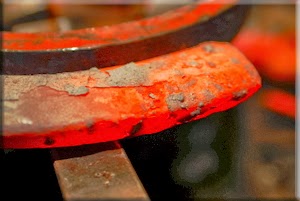I do most of my writing and design work sitting in a chair working with a laptop computer. About 25 years ago I designed a platform which I could place in front of me to rest on the chair arms and support the laptop - sort of a lap desk or table.
The general concept wasn’t mine and there were some products on the market. I just checked and this is one sold currently.
Mine is somewhat different and doesn’t cost $40. My design has gone through several versions. The dimensions of my current version hasn’t changed much from the beginning but almost everything else has changed.
The prototype was made from Masonite with a couple of pine one-by struts underneath. Each time I made a new version the product got lighter I’ll skip the details of the evolving design and show what I use today.
I had some 2-inch extruded polystyrene insulation sheet left over from a modeling project and traced my lap desk top perimeter on it and cut it out. Next I cut a rectangular piece to fit on the bottom. It is narrower than the chair arms and allows the desk to rest on my thighs as well as the chair arms. I glued the two pieces together with styrofoam adhesive and smoothed all the edges with a rasp.
When the glue was dry I wrapped the foam board in paper mashie using a paper and thin white glue paste. As I recall, I covered one face and let it dry, then turned it over and covered the second face. After a week or so it was entirely dry so I sanded it and painted it with a white gloss paint. The design worked rather well and didn’t shed any polystyrene debris. It was rigid and very light weight. The slick surface, however, tended to let the laptop slide toward me rather than staying in place for optimal typing. At the moment that is addressed by laying on a non-attached sheet of a non-adhesive product called Easy Liner which I picked up in the “Clearance Sale” aisle at Walmart.
It has worked to keep the laptop from sliding around and is comfortable for my forearms to rest on as I type.
Speaking of typing, I recently discovered that the Dictation feature on my Mac now works almost perfectly with OSX 10.9.1. I did download the program rather that use it through the Apple server so the function will be available when I am offline. I just hit the fn key twice to turn it on - dictate - hit the fn key again to turn it off. It uses the built-in microphone, types as I speak and was near perfect from the get-go. Supposedly it learns with further use, but if it never gets any better than it is now, I’ll do a lot less typing.
































